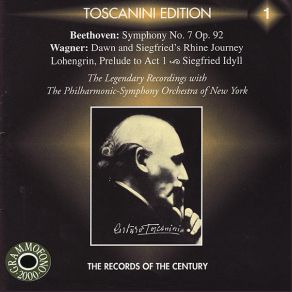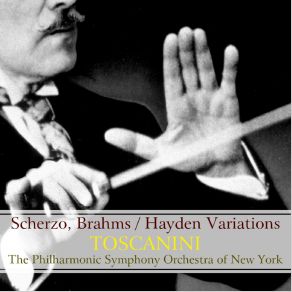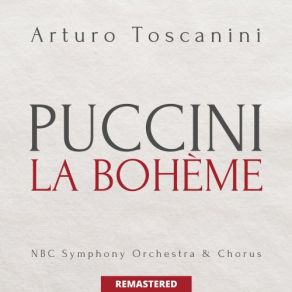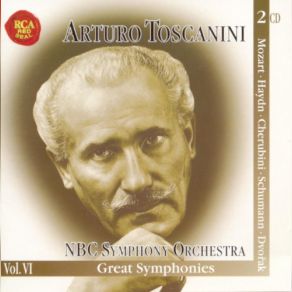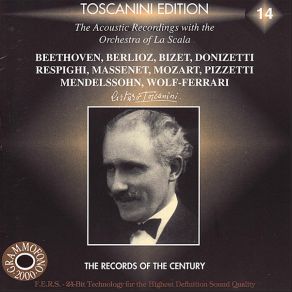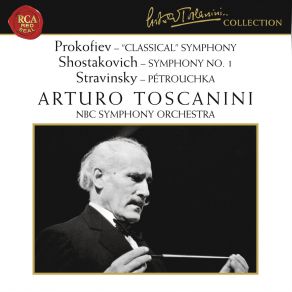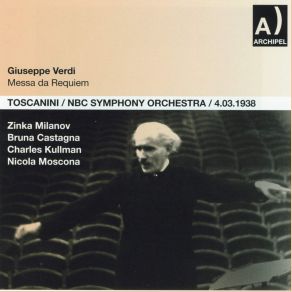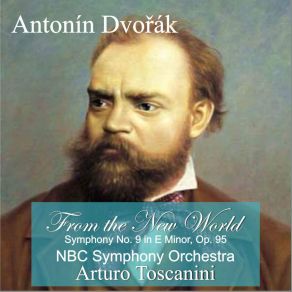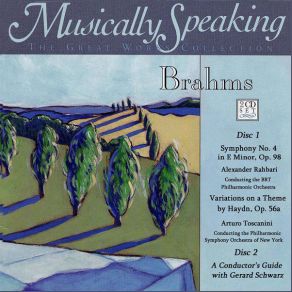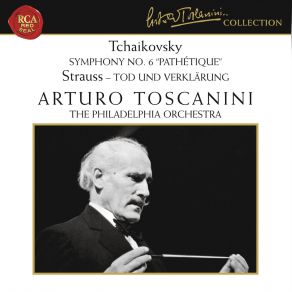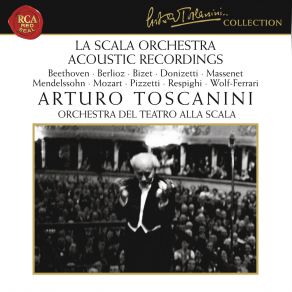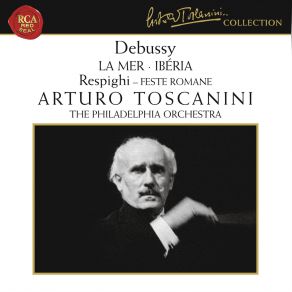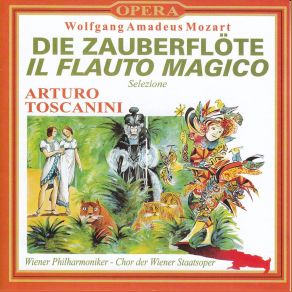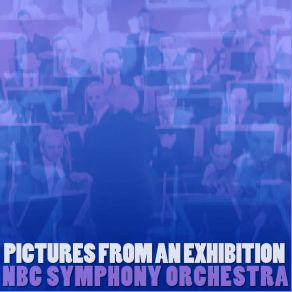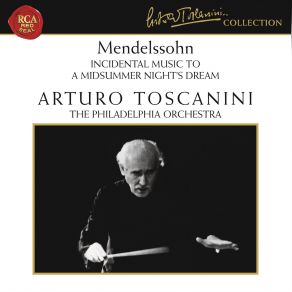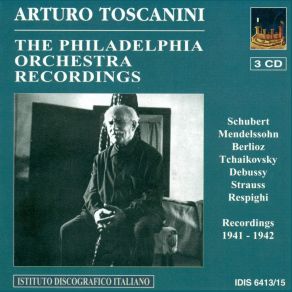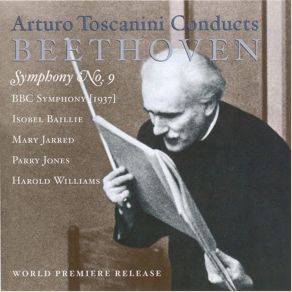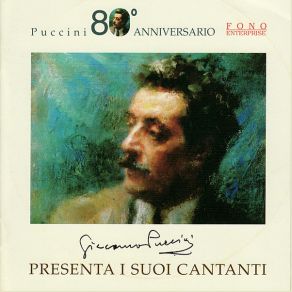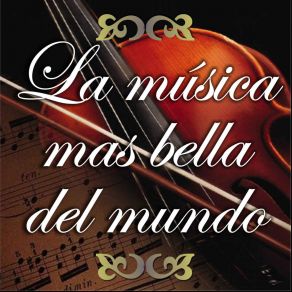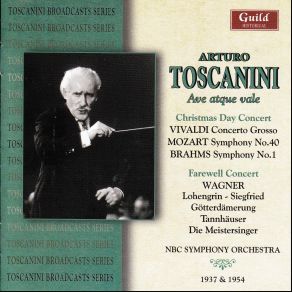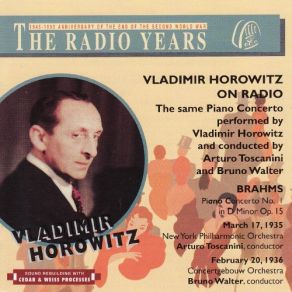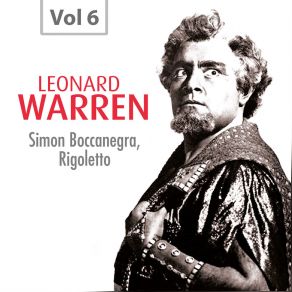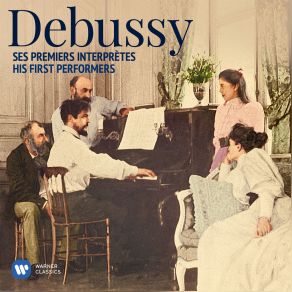Arturo Toscanini
Wikimp3 information about the music of Arturo Toscanini. On our website we have 70 albums and 45 collections of artist Arturo Toscanini. You can find useful information and download songs of this artist.
Biography
[Edit]One of the greatest opera and concert directors of all time, Arturo Toscanini was internationally known for his forcefulness and style of conducting, which led to near-perfection in his work. He was, from the opening of the 20th century until his retirement in the '50s, the most prominent orchestra conductor in the world, his only peer being his longtime rival, Wilhelm Furtwangler. Born in Parma, Italy, in 1867, Toscanini began training at the Parma Conservatory when he was nine-years-old. There he studied the cello and musical composition. In 1885, at age 18, he graduated from the Conservatory with top awards for his cello playing, and only a year later he received an invitation to play with the Italian opera in Rio de Janeiro. On the night of a performance of Aida, the conductor was forced to leave the stage due to a hostile audience reaction, and despite his lack of experience at the podium, Toscanini was asked to replace him. It was one of those career-making moments that comes along once in a lifetime, as the cellist conducted the opera from memory, revealing a facility that would serve him well across the next seven decades. The performance received a standing ovation, and he was asked to remain as conductor until the end of the season. From that day, Toscanini's career path was set. Although he did return to the pit as a cellist for the premiere of Verdi's Otello (under the supervision of the composer), he soon made a name for himself as a conductor for his demanding perfectionism, and he subsequently directed the orchestra in the premieres of Puccini's La Boheme and Leoncavallo's I Pagliacci over the final decade of the 19th century. He became the most renowned young conductor in Italy, a leading figure in the opera houses of Rome, Milan, and Turin, and, beginning in 1898, the chief conductor at La Scala. Amid all of this work in the opera house, Toscanini didn't get around to conducting his first orchestral concert until 1896. That program included the Italian premiere of Brahms' Tragic Overture, as well as works by Schubert, Tchaikovsky, and Wagner.
What made Toscanini's work special was his perfectionism, and his professed devotion to the score as written. His experience in the orchestra pit made him abhor the excesses that he saw and heard on the part of other players, as well as the conductors of the era. He was appalled by the self-indulgence that seemed to be the hallmark of performances, and the tendency of conductors and players to luxuriate in their own sounds, ignoring the subtleties and exactitude insisted upon by composers. In a sense, he was a kindred spirit to Johannes Brahms — both men regarded themselves as dedicated classicists in an era of romantic excess, and each thought of himself as a bulwark against the worst of those excesses. Toscanini was very much an iconoclast, demanding and defiant, and oblivious to "traditions," regarding them as simply the bad habits of the last performance. Musicians who worked under him recalled that he treated every performance as though it were the first ever, and this approach, coupled with his lack of patience for what he regarded as laziness among musicians, led to an astonishing, revelatory sharpness and precision in the performances under his baton, by singers as well as players. In many respects — as revealed in his recorded legacy — he was the distant precursor to the contemporary movement toward musical authenticity, especially in his approaches to Haydn, Mozart, Beethoven, and Brahms, but his methods also worked on the music of Elgar, Debussy, and other post-Romantic composers.
By the start of the 20th century, his reputation had spread well beyond the boundaries of Europe, and in 1908 he accepted an appointment with the Metropolitan Opera in New York that lasted until 1915. It was from that engagement, and the reputation that he developed — for his meticulous knowledge of his scores, conducted from memory, and his perfectionism, backed up by an explosive temper — that helped plant the beginnings of the cult of Toscanini in the United States. As a figure at the podium, he was lionized in the press, and renowned for his manner, a fierce persona with expressive hand movements (but, in actuality, exerting more communication and control through his eyes); he already had a reputation for faithfulness to the printed score, which he sharpened with strict attention to tempos and timbres, so that a Toscanini performance was marked by extraordinary precision and crisp, brisk, clean playing, even by exceptionally large numbers of musicians, on scores as prodigious as the Beethoven Symphony No. 9 (which comprised his New York concert debut).
It was while in New York, however, that his personal life interrupted his career momentum. Toscanini was a brilliant, forceful musician, and his passions extended beyond music to include women beyond the boundaries of his own marriage. It was during his tenure at the Met that he became involved with Geraldine Farrar, one of the most celebrated singers of her day; this was during a time when the United States, a basically Protestant country with a strong cultural inferiority complex, was as puritanical as any industrialized nation in the world; and even in the relatively sophisticated circles of the New York opera world, it was intolerable for the public to countenance such a relationship. Toscanini was forced to relinquish his position and hastened his plans to return to Italy. In a turn of fate that was fortuitous, he went back to Italy weeks earlier than planned; his original passage had been booked aboard the Lusitania that May, which was sunk by a German U-boat on the voyage he was to have taken, losing over 1,000 of the 1,900 people aboard.
Toscanini returned to Italy, where, for the duration of the fighting, he limited his conducting to military bands and benefit performances. With the cessation of the war, however, he took up the post of music director at La Scala, which had fallen on very hard times during the war, and facilitated its revival to full health and international stature. He held forth as music director at La Scala until the end of the 1920s. It was during this period that he also accepted an invitation to appear with the New York Philharmonic as a guest conductor. He subsequently took the orchestra on its first European tour in 1929, to immensely positive popular and critical responses, and immediately accepted the appointment as the Philharmonic's principal conductor.
Up to this point in his career, Toscanini had been primarily known as an operatic conductor, but with his Philharmonic appointment, the emphasis of his work shifted decisively to the concert hall. He maintained a busy schedule in both North and South America and Europe, although his status within his native Italy was strained at this time, due to his antipathy toward Benito Mussolini and his Fascist regime. In one notorious incident, he was attacked and hit in the face by pro-government thugs for his refusal to play the anthem of the ruling party. Toscanini's political views were left-of-center, and he had no tolerance for the posturing, much less the Fascist politics of Il Duce; his public expressions of disdain for the Italian dictator — later echoed in his contempt for German Chancellor Adolf Hitler — would make him a hero to tens of millions of non-music devotees; it would also set him on a collision course with the one conductor in the world, Wilhelm Furtwangler of Germany, who was his true peer. He continued to work regularly in Paris, Vienna, Salzburg, Stockholm, and the Hague, and in the still relatively liberal Weimar Germany of 1930, also became the first conductor from outside the Austrian-German tradition to conduct at Bayreuth.
Toscanini retired from the New York Philharmonic post in 1936, at age 69, weary of the orchestra's required three-concerts-per-week schedule for five months of the year and also of the often contentious task of managing the orchestra. There was no sign of weariness on his part at the podium, however, and for his final concert in April of 1936 the police had to be called to control the crowds that swamped the Carnegie Hall box office in desperate search of standing-room passes to the performance. The frenzy was understandable — in his decade-long association with the Philharmonic, Toscanini had transformed the orchestra, raising the level of playing as well as the precision of the playing to a level never seen before in an American orchestra, and imposing musical approaches that are still part of their sound in the 21st century. He had much to say about the selection of a successor — his first recommendation was Furtwangler, whose reputation in the German-speaking world rivalled Toscanini's. Furtwangler was a towering figure, but also a controversial one for having taken the opposite approach from Toscanini to dealing with the political events in his country; whereas Toscanini had all but exiled himself from his native Italy over Mussolini's rise to power, Furtwangler, although hardly a Nazi sympathizer, had chosen to remain in Germany after the rise of the Nazi regime, in order to protect music as best he could and, especially, keep the Berlin Philharmonic (and, later, the Vienna Philharmonic) from becoming tools of the regime. Furtwangler's was a principled stand but one that made him, as a leading musical figure in Nazi Germany, impossible as a choice to lead a major American orchestra in 1936.
Meanwhile, as the Philharmonic's search went on, Toscanini returned to Italy, where he was considered virtually a political non-person. He was rapidly losing places where he would or could work, as Fascism spread across the continent. In addition to Italy, he was no longer accepting engagements in Germany, and as the Nazis began their political and military sweep across Europe, he removed those nations from the venues where he would work, and Italy would soon become untenable for him even as a place to live. Then, in 1937, a year after his retirement from the Philharmonic, Toscanini received the offer from a totally unexpected quarter that would transform his life and career, just at a point when he was pondering his retirement and how he might spend it.
The proposal came from David Sarnoff, the head (and founder) of RCA (Radio Corporation of America) and the National Broadcasting Company, which included the RCA Victor record label. It was Sarnoff's idea to put together an orchestra for Toscanini to conduct on the radio, in a 16-week annual season, of one concert each weekend, for which he would be paid a fee of $40,000 dollars a year (this in a time when the average working man in a good job took home perhaps $1800.00 a year), plus a royalty on any recordings that might grow out of the broadcasts, in addition to whatever recordings he might choose to do. At the time, Toscanini was 70 and, by his own description, "an old man," and uncertain about whether or not he should accept the offer and venture into this new kind of endeavor. No established conductor had ever before been presented with such a proposal, nor would most have known what to do about it — for conductors of his generation, recordings and broadcasts were normally an adjunct to what they actually did, leading performances in concert. And adding to his uncertainty was the fact that he had never really been attuned to the technology or process of recording, much less broadcasting. He'd done some work with the BBC in England, but Toscanini, up to that time, had been one of the least recorded of major conductors in the world — he'd cut some acoustical sides with the La Scala Orchestra while on tour in 1920, but otherwise, in the 12 years since the advent of electrical recording, had only done a tiny handful of sessions with the New York Philharmonic, for a total of something less than six hours or so of recorded music in 17 years.
Moreover, he was known to abhor the recording process as it existed then, and with good reason. There was no recording tape and there were no LPs — all recording was done to wax lacquer discs with a total running time of slightly over four minutes; and listeners purchased music on heavy 78 rpm shellac platters that were as fragile as they were weighty, and had to be turned over or switched at four-minute intervals. Any music running over four minutes had to have a place where it could be broken and the sides switched, which meant that the conductor had to plan his tempos and each "event" in a work with this limitation in mind. And there was no playback in the studio — producers had to have perfect ears to pick up any flaws in performance at the time of recording, because it could take days or weeks to get a test-pressing back to search for errors after the fact. On the other hand, almost all of Toscanini's recordings had been for RCA Victor, to which he was signed in America, and included among those sides was his extraordinary 1936 rendition of the Beethoven Symphony No. 7, which 70-plus years later, still counts among the greatest recordings ever done of the piece.
Toscanini accepted the offer, and in doing so moved into a unique position musically and culturally — one that was unprecedented for a conductor, and anticipated the subsequent careers of figures such as Herbert Von Karajan, Sir Georg Solti, and Leonard Bernstein. It was, in many ways, a marriage made in heaven, and couldn't have come along at a more opportune moment for either party in the contract even though, at the time, the classical music business was not great. Indeed, for all of his public renown in association with the Philharmonic, the classical music business was struggling along, as was the record industry and the whole economy. If the horrendous economics of the early '30s and the early days of the Great Depression — during which it seemed like the record industry might disappear — were past, there was still retrenchment going on as labels consolidated. And the finances of most orchestras were still very shaky, as the effects of the Depression lingered into the second half of the '30s.
But that wasn't the case with radio. The one area of the entertainment business that boomed in the '30s, radio occupied a special place in the cultural milieu of the era; even the poorest families held it in special regard, so much so that a poll taken during the depths of the Depression revealed that most families would part with their ice box (precursor to the refrigerator) before they would part with their radio. And in the world of radio, NBC was the reigning giant, with two full national networks, the red and the blue (one of which, the blue network, because of a government anti-trust suit, was later divested and became ABC). It had the resources and, through the thinking of Sarnoff, the will to offer Toscanini a financially stable position that allowed him to reach the entire country at once on a regular basis.
The radio networks all employed orchestras of various types and sizes for on-air work, but they were generally led by either up-and-coming, journeymen conductors of no special standing at the time (such as Bernard Herrmann, at that phase of his career), or men (and it was only men in those days) recruited from the top ranks of the theater world; and the orchestras were there at the employ of programmers and producers, their existence and presence not an end unto itself. No conductor of Toscanini's reputation and renown had ever before agreed to take a post conducting a broadcast orchestra; and no radio network had ever made such a broad commitment to classical music. In the 21st century it seems like it could only happen in fiction, but in the '30s there was a serious, measurable audience for classical music in the millions. Music was still taught in schools, so many millions of people knew what classical music was, and a lot of people did like it, and not just the elites.
NBC allowed him to reach them all, by the millions, and with far less effort than the Philharmonic had demanded. Much of the work of actually assembling the orchestra was done by the assistant that he chose, Artur Rodzinsky, while the running of the orchestra was left to others still. His first broadcast took place on Christmas Eve of 1937, from the newly opened Studio 8-H in Rockefeller Center. From that day forward, Toscanini effectively became not just the most widely heard conductor in the world, but the music teacher to the world. The only people who weren't happy over this development were the New York Philharmonic and its management — with a couple of strokes of Toscanini's and Sarnoff's respective pens, the leading American orchestra suddenly had a competing organization based not ten blocks away in a brand-new, state-of-the-art facility at Rockefeller Center, and one that had the vast resources of NBC at its disposal; and it was clear to everyone that such was Sarnoff's outlook on the subject, that the prestige value alone of having Toscanini under contract — and the possibility of years of robust record sales through RCA Victor — meant that the orchestra's broadcast work wouldn't even have to be directly profitable to justify the commitment. And though the Philharmonic gave far more concerts during what was then a five-month season, its radio broadcasts on CBS also now had a competitor on NBC for audience and publicity; and even though Toscanini's broadcasts were unsponsored, his presence on the network allowed NBC to compete with CBS for the Philharmonic's potential sponsors as part of other broadcast activities.
Within a year of his first year in this new endeavor, Toscanini found himself transformed from a titan of the concert hall and the opera house into classical music's first electronic media superstar. And although there were some rough spots along the way — including a resignation (later withdrawn) in a dispute over management and authority — the broadcasts ended up continuing for 17 years, amounting to hundreds of performances. His mere presence ensured that the NBC Symphony was as prominent in the media as the Philharmonic, and pulled a bigger audience. Indeed, through these broadcasts, Toscanini became more than any other single conductor a virtual arbiter of musical taste for the country. A classical piece could achieve instant acceptability, and even popularity, simply by his adding it to his repertory on a broadcast, and there were a surprising number of living (and not long deceased) composers represented in that repertory. In those years, he was more involved and happier with the broadcasts than with commercial recording, which was still an unwieldy process. There were also guest conductors along the way, but many of these were some of the top names in the world, including Bruno Walter and George Szell, so no listener ever felt "cheated" in any way.
Meanwhile, world events were having an effect on Toscanini's larger career. From 1939 on and the outbreak of war — with Italy on the side of the Axis — New York City became his permanent home. He did his best to oppose the Fascists in his work, journeying to the Middle East to conduct the Palestine Philharmonic, an orchestra made up principally of expatriate European Jews who had been driven from their homelands by the Nazis. This act, along with his opposition to Hitler and Mussolini (who, by 1939, had moved to embrace Hitler's anti-Semitism, and had Italy's press declare Toscanini an "honorary Jew" and, consequently, worthy of being shot), gave Toscanini a special place in the hearts of Jews around the world and also of anti-Nazis the world over. There were also musical repercussions to his political positions. In response to his abandonment of the Salzburg Festival following Germany's forced annexation of Austria, Toscanini became one of the forces behind the creation of the Lucerne Festival in Switzerland; ironically, it was at the Lucerne Festival, after World War II, that Furtwangler would enjoy some of his greatest triumphs.
Meanwhile, the Philharmonic searched for a successor to Toscanini, to no avail. Finally, John Barbirolli, a young Englishman (despite his name, London-born), was chosen, but he was forced by the war to return to England in 1941. The orchestra eventually settled on Artur Rodzinsky, who was scarcely more successful, and then Dimitri Mitropoulos, effectively chewing them up in the meat grinder of the organization's internal politics and spitting them out, before they found in Leonard Bernstein a music director who could approach Toscanini's charisma. But two decades elapsed between Toscanini's exit and Bernstein's arrival, years in which Toscanini's reputation and audience grew, and the Philharmonic's didn't.
Although the NBC Symphony wasn't initially quite what the press releases said it was — rather than newly assembled from the best musicians in the business, many of its members were already employed by NBC in various orchestral ensembles — it ultimately proved a formidable performing body, again rivaling the Philharmonic, and it occasionally did tour and give concerts. From the beginning, the demand for their work was high. The law prohibited the sale of tickets to broadcast programs, but for the free passes, NBC received 50,000 requests for the premiere broadcast by the orchestra in 1937, in a studio that held 1,400. Even as he discovered the level of demand still attending his work, Toscanini's recording career underwent a boom in the years that followed, fueled by the broadcasts. In 1937, he had been among the most elusive of major conductors in the recording studio, with hardly six hours of music on record, if the records had been in print. But within ten years he became one of the most thoroughly well-documented and recorded conductors in the world. His work included the first complete, unified Beethoven symphonic cycle, a Brahms cycle, and concert versions of the most important of Verdi's operas (which he knew — going back to Verdi's own time — better than any other living conductor), as well as Puccini's La Boheme (which he had conducted at its premiere) and Beethoven's Fidelio, plus outstanding recordings and performances of hundreds of other works, ranging across 200 years and the entire breadth of Western orchestral music, from Bach to Haydn and Mozart to Schubert, Mendelssohn, Schumann, and Dvorák, up through Elgar, Vaughan Williams, and Shostakovich.
The NBC Symphony was not only competing with the New York Philharmonic for audience and exposure, but also for musicians. At their founding, the orchestra had pulled away some of the best players in the country, especially on the East Coast, offering salaries competitive with New York, Boston, and Philadelphia for much shorter seasons and far fewer performances; and by the '40s it was in many ways the place to be, much more so than the Philharmonic, which was going through a very unsettled time over its management and direction. A case in point was trombonist Abe Pearlstein, a Juilliard student who was known as the best baritone horn player in the city — at any other time in history, he would have been sought out and hired by the Philharmonic, but it was Toscanini (once he'd gotten past his initial insistence and reliance upon Italian horn players) who pulled him out of Juilliard to play the baritone horn (really the tenor tuba) part in the "Bydlo" portion of a performance of Ravel's orchestration of Mussorgsky's Pictures at an Exhibition, and he eventually ended up as second trombone in the orchestra.
The RCA Victor recordings sold well, but were also a source of controversy right into the '90s, 40 years after Toscanini's death. For the first decade or so of his time with NBC, most were done from Studio 8-H at the NBC Building in Rockefeller Center in New York, but many others were done at Carnegie Hall. Their quality varied somewhat, in ways that it wasn't always easy to judge on the 78 rpm platters of the period. Those had a very dry sound to start with, which made even the best recordings seem thin and limited in range and depth, but even when the masters were bumped over to magnetic tape and the work reissued on LP, there was a lack of warmth and depth on most of the recordings that made some people complain. Part of the problem lay with Studio 8-H itself, which, although a state-of-the-art facility, had been designed for the broadcast of voices, and had an almost dead acoustic that dampened any echo or resonance — it was perfect for dramatic performances or comedy, but it gave a peculiarly dead, flat sound to musical instruments, even 60 or 70 of them at a time as with the NBC Symphony. In the decades since, some scholars have explained Toscanini's acceptance of the studio in terms of his own approach to music. Its flat acoustic fit well with his clean, precise approach to interpretation; he wanted the audience to hear the details of the music rather than the lush, blooming majesty of massed instruments. But combined with the conductor's tendency toward quick tempos, these elements gave many of his RCA sides a raw, almost minimalist sound that lent itself to the image that Toscanini had cultivated, of a spare (almost spartan) precise interpreter. The fact that he was notably indifferent to the technical concerns of engineers only added to the mystique of the recordings in question. An apocryphal story tells of his once being told that performing a particular piece at the volume he called for would damage the recording equipment, and his response, bristling with impatience, was, "Then break the machine!"
He confined his work to the United States for the duration of World War II, but returned to Milan in 1946 to reconsecrate La Scala, which required extensive rebuilding from Allied bombing. He continued to concertize in Europe each year — where HMV Records, part of the EMI Group, released his recordings — and made some especially important appearances and recordings in England through 1952. By that time, magnetic tape recording had come into use, along with the LP record, and classical music was entering its golden era of recording. As of his retirement in the spring of 1954, at age 87, he'd amassed hundreds of recordings, often of two or more interpretations of the key pieces of his repertory, which comprised nearly 500 works ranging from the 18th century to the 1940s. He was so well known that, in the 1951 movie He Ran All the Way — a thriller that had nothing to do with music, aimed at a mainstream audience — when a character at one point tells the heroine that he has a new Beethoven Fifth Symphony on record "by Arturo," filmgoers knew exactly who he meant (although Toscanini had no nickname or familiar name except "The Maestro").
In the decades after his death, in early 1957, at age 89, Toscanini's reputation suffered. Longtime critics who resented his prominence and the deference accorded him by the musical establishment took advantage of the narrowness of the repertory that RCA chose to release, and the flaws in those releases, to exaggerate Toscanini's flaws. The notion took root that his repertory was limited to established "warhorses" (the Beethoven and Brahms symphonies, etc., although when he'd started doing Brahms. Debussy Dvorak, et. al, the latter were living composers), that his performances never changed, and that he tended to conduct everything at too quick a tempo. His reputation suffered further from the sound of the records that were out there. The Studio 8-H recordings, in particular, were cold and flat when compared to the records coming out of the stereo era; the timbres of the original recordings were further compromised by the continued use of substandard master sources. RCA Victor had complicated matters further by "sweetening" some of the 8-H recordings with extra reverb and other electronic additions. The attempts to sell his work in "rechannelled stereo" releases in the '60s was nothing less than disastrous, for Toscanini's reputation and any listeners who bought those LPs.
The early CDs only made the problems worse, enhancing the flaws in the master sources rather than the virtues of the recordings and performances. There were still enough fans out there who cared to matter to the record label, however, and in the late '80s RCA began doing something about the condition of the Toscanini library. A concerted effort was made to organize what was there, and to fill in what wasn't with master-quality tape transfers provided by the Toscanini Estate (the Maestro had received master copies of virtually every broadcast and recording he'd ever done for the network from Richard Blane Gardner, his favorite engineer) and the Recorded Sound Archive at Lincoln Center, where much of it was deposited. The result, in 1992, was the release by RCA Victor Gold Seal of the Arturo Toscanini Collection, made up of 82 CDs, putting more of his work in print than had ever been available at one time before. The sound quality was improved, although there were still problems, mostly owing to the mastering technology of the period.
Finally, in the late '90s, RCA/BMG took the bull by the horns and did a comprehensive inventory of its vault holdings, and the result was an improved cycle of CDs called The Immortal Toscanini. Those releases, packaged as slim double-CDs, were a serious revelation to most listeners. In 2006, his ten television appearances with NBC Symphony, made between 1948 and 1952 — including an amazing concert performance of Verdi's Aida — were released on DVD through Testament Records, which had also licensed a body of previously unreleased audio performances from the Toscanini estate. ~ Bruce Eder & Kim Summers, Rovi
Title: Arturo Toscanini Conducts Mozart, Rossini, Debussy & Elgar
Artist: BBC Symphony Orchestra, Arturo Toscanini
Genre:
Title: The Great Live Concerts (Live)
Artist: Orchestra Del Teatro Alla Scala, Arturo Toscanini, New York Philharmonic
Genre: Orchestral, Orchestral
Title: The Radio Years, The General Motos Concert
Artist: Arturo Toscanini, New York Philharmonic
Genre:
Title: Giuseppe Anselmi Collection
Artist: Arturo Toscanini, Giuseppe Anselmi, Orchestra Del Teatro Alla Scala Di Milan
Genre: Classical
Title: NBC Symphony Orchestra Vol. III: Symphony No. 9/Missa Solemnis
Artist: Arturo Toscanini
Genre: Classical
Title: Schumann: Symphony No. 2 - Liszt: Orpheus, Hungarian Rhapsody
Artist: Arturo Toscanini
Genre:
Title: Toscanini Conducts Roussel, Roger-Ducasse, Dukas, Debussy, Franck
Artist: Arturo Toscanini
Genre: Orchestral, Orchestral
Title: Arturo Toscanini (Venice 1949)
Artist: Orchestra Del Teatro Alla Scala, Arturo Toscanini
Genre:
Title: Beethoven: Symphony No. 9
Artist: Arturo Toscanini, Teatro Colón Orchestra / Teatro Colon Orchestra
Genre:
Artist: Arturo Toscanini
Genre: Orchestral, Classical, Orchestral
Title: Brahms: Symphony No. 2 & Symphony No. 4
Artist: BBC Symphony Orchestra, Arturo Toscanini
Genre:
Title: Shostakovich: Symphony No. 7 - Barber Adagio
Artist: Symphony Orchestra, Arturo Toscanini
Genre:
Title: Giuseppe Verdi: Messa da Requiem (04.03.1938)
Artist: Symphony Orchestra, Arturo Toscanini
Genre:
Title: Ludwig van Beethoven: Symphonies No. 2, No. 7
Artist: Symphony Orchestra, Arturo Toscanini
Genre:
Title: Gioacchino Rossini, Giuseppe Verdi and Richard Wagner
Artist: Arturo Toscanini, Philharmonic Symphony Orchestra
Genre:
Artist: Symphony Orchestra, Arturo Toscanini, New York Philharmonic, Joseph Schuster, Edmund Kurtz, Ania Dorfman
Genre:
Title: Brahms: Violin Concerto (Live, 1935)
Artist: Jascha Heifetz, Arturo Toscanini, New York Philharmonic
Genre: Orchestral, Classical, Orchestral
Title: Verdi: Messa da Requiem & Te Deum
Artist: Arturo Toscanini
Genre: Orchestral, Classical, Opera, Choral, Orchestral
Title: Beethoven: Missa Solemnis, Op. 123
Artist: Westminster Choir, Arturo Toscanini, Alexander Kipnis, Zinka Milanov, Bruna Castagna
Genre:
Title: Toscanini - Atterberg, Barber, Ravel Etc. - 1940 & 1943
Artist: Symphony Orchestra, Arturo Toscanini
Genre:
Title: La Scala Orchestra Acoustic Recordings
Artist: Orchestra Del Teatro Alla Scala, Arturo Toscanini
Genre: Orchestral, Classical, Orchestral
Title: Arturo Toscanini e l'Orchestra del Teatro alla Scala
Artist: Orchestra Del Teatro Alla Scala, Arturo Toscanini
Genre: Opera
Title: Beethoven, Mozart & Brahms: Orchestra Works
Artist: BBC Symphony Orchestra, Arturo Toscanini
Genre:
Title: The Salzburg Experience, Vol. 1
Artist: Wiener Philharmoniker, Arturo Toscanini, Chor Der Wiener Stattsoper
Genre: Opera
Collections
Title: Uplifting Classics
Genre:
Title: Absolutely Classical, Vol. 168
Genre:
Title: The Very Best of Pyotr Il'yich Tchaikovsky
Genre:
Title: Wolfgang Amadeus Mozart: Classical Genius
Genre:
Title: Beethoven: Quartet, Op. 135 - Symphony No. 9
Genre:
Title: Toscanini - Memorial Tribute 1938-1954
Genre: Pop
Title: Giuseppe di Stefano: Il mio primo disco
Genre:
Title: Late Night Classics
Genre:
Title: Orchestras In Movies
Genre:
Title: Musica Mundana 17. (Hungaroton Classics)
Genre:
Title: Rossini: Sinfonie Da Opere
Genre: Opera
Title: Romantic Opera Duets
Genre: Opera
Title: Musica Mundana 20. (Hungaroton Classics)
Genre:
Title: A to Z of Conductors
Genre:
Title: 5 Conductors vs. Beethoven's 5th
Genre:
Title: Classical Hits in Slow Tempo
Genre:
Title: 100 Must-Have Classical Music Favourites
Genre:
Title: 7 Conductors vs. Beethoven's 7th
Genre:
Title: Giacomo Puccini: La Sua Voce
Genre: Opera
Title: Omaggio a Gioacchino Rossini
Genre:
Title: The 50 Absolute Essentials of Classical Music
Genre:
Title: I love Verdi
Genre: Opera
Title: Historische Strauss-Interpretation
Genre:
Title: La Discothèque Idéale De Diapason Vol. III (CD7)
Genre: Classical
Title: Debussy: His First Performers (CD4)
Genre: Classical
Featuring albums
Title: Brahms: Piano Concerto No.2 - Kabalevsky: Piano Sonata No. 2
Artist: Vladimir Horowitz
Genre:
Title: Beethoven & Tchaikovsky: Piano Concertos
Artist: RCA Victor Symphony Orchestra, Vladimir Horowitz, Symphony Orchestra
Genre:
Title: William Primrose Collection, Vol. 4
Artist: William Primrose
Genre: Orchestral, Classical, Orchestral
Title: Mozart & Beethoven: Violin Concertos
Artist: The London Philharmonic Orchestra, Jascha Heifetz, John Barbirolli
Genre:
Title: Mozart: Clarinet Quintet - Bartok: Contrast - Gershwin: Rapsody In Blue
Artist: Benny Goodman
Genre:
Title: Ein Abend In Wien (An Evening in Vienna) Volume 4
Artist: Wilhelm Furtwängler / Wilhelm Furtwangler
Genre:
Title: Gioachino Rossini : Guglielmo Tell (Leipzig 1953)
Artist: Herbert Kegel, Rundfunkchor
Genre: Opera
Title: The Very Best of Ravel
Artist: André Cluytens Various Artists / Andre Cluytens Various Artists
Genre: Classical
Title: Greatest Ever Classical Masterpieces - The Very Best Classical Music Collection
Artist: Sir Adrian Boult, Berliner Philharmoniker, Francesco Maria Piave, Thomas Beecham, Yehudi Menhuin, Leopold Stokowski, Prague Philharmonic Strings Orchestra, Cambridge Philharmonic Strings Quartet, The London Festival Royal Orchestra, City Of Oxford Philharmonic Orchestra, The Edinburgh Symphony Orchestra, John Barbirolly, Karl Münchinggers / Karl Munchinggers, Myra Hest, Carlos Germani, Charles Boult, Teresa Garatti
Genre: Classical
Title: Great Tenors of the World
Artist: Orchestre Des Concerts Lamoureux, London Symphony Orchestra And Chorus, Symphony Orchestra, Berlin State Opera Orchestra, Nils Grevillius, Franco Ghione, Carlo Sabajno, La Scala Orchestra, Eugène Bigot / Eugene Bigot, Albert Coates, Erich Orthmann, Stockholm Concert Association Orchestra, Bruno Seidler-Winker
Title: Verdi & Cherubini: Choral Works, Vol. 11
Artist: Arturo Toscanini NBC Symphony Orchestra
Genre: Classical
Title: Robert Schumann, Vol. 1 (1946)
Artist: Piero Coppola
Genre: Orchestral, Classical, Orchestral
Title: Maurice Ravel, Vol. 1 (1930-1948)
Artist: Various Artists
Genre: Orchestral, Classical, Orchestral
Title: Jascha Heifetz Collection, Vol. 3 (Live)
Artist: Jascha Heifetz
Genre: Orchestral, Classical, Orchestral

